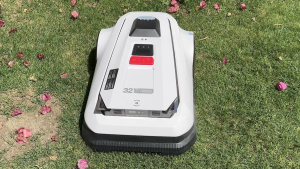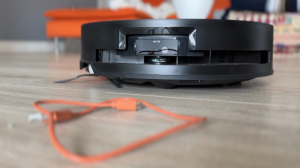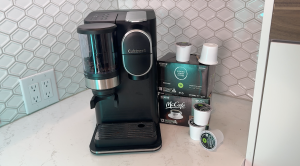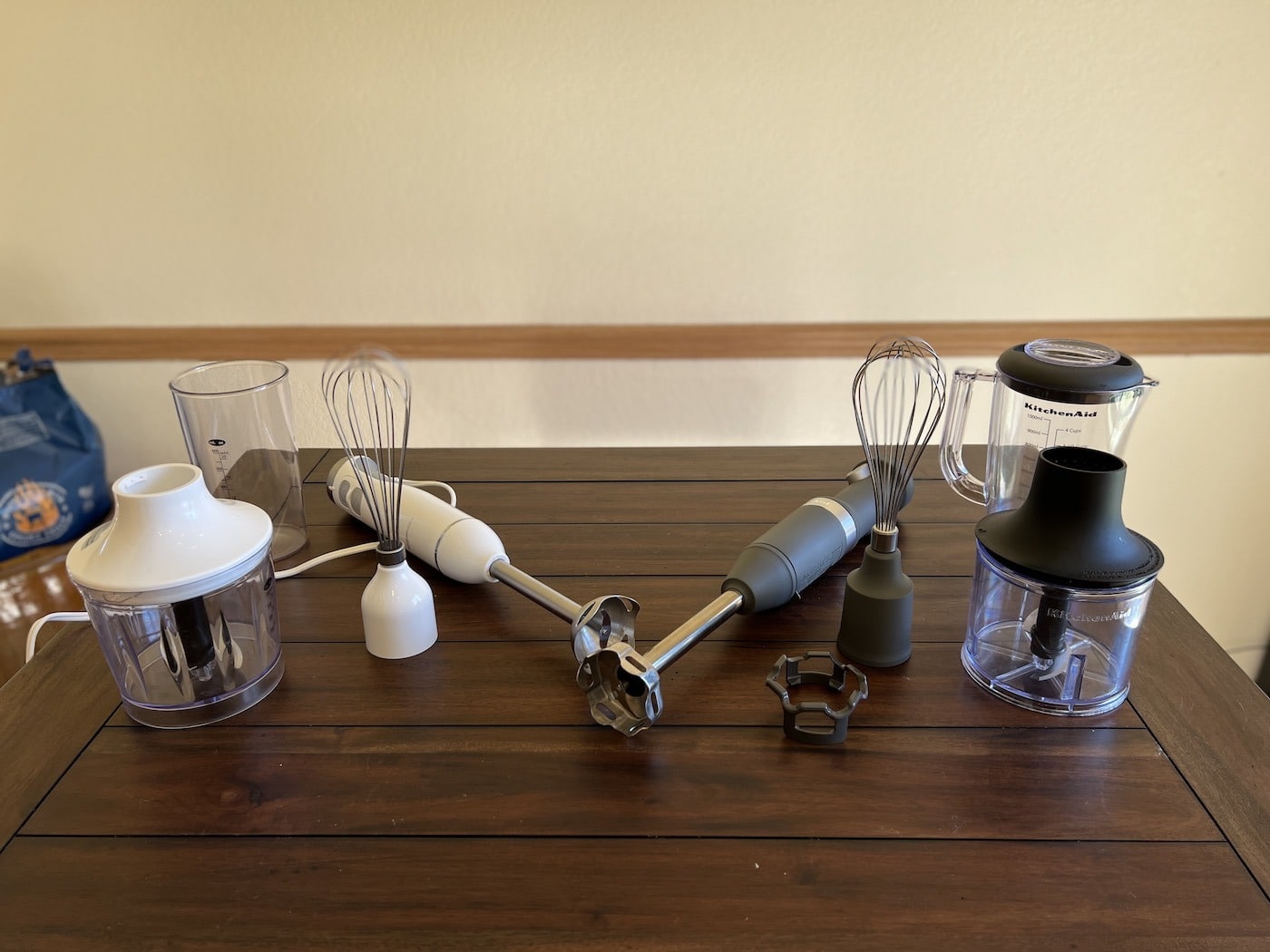 With so many different hand blenders on the market, it can be tricky to know which one is right for you. The “right” choice can often depend on your specific needs and requirements. With that in mind, let’s have a look at the Amazon Basics Multi-Speed Immersion Hand Blender and the KitchenAid Cordless Variable Speed Hand Blender. There are a lot of similarities between the two models, but also some crucial differences that may be the deciding factor for you.
With so many different hand blenders on the market, it can be tricky to know which one is right for you. The “right” choice can often depend on your specific needs and requirements. With that in mind, let’s have a look at the Amazon Basics Multi-Speed Immersion Hand Blender and the KitchenAid Cordless Variable Speed Hand Blender. There are a lot of similarities between the two models, but also some crucial differences that may be the deciding factor for you.
Cheap vs expensive hand blender kits: Amazon Basics corded vs. KitchenAid cordless
Corded or cordless
In this decision, you’ve got a key choice: corded or cordless.
If outlet placement in the kitchen is an issue for you, you might want to consider trying a cordless model. It allows you total freedom while you’re blending. On the other hand, cordless blenders will need to be recharged from time to time, and the battery life will limit you. A corded model might suit you if longer blending sessions are required.
The Amazon Basics model comes with a six-foot cord and must be used plugged in. The KitchenAid model is cordless and charges via a wall plug. You can’t use it while it is plugged in to charge.
What you get
What you get with each model is largely the same: There’s the motor end, and the main immersion blender blade. There’s a whisk, and a beaker, plus the chopper bowl kit. The KitchenAid hand blender also gives you a pan guard.
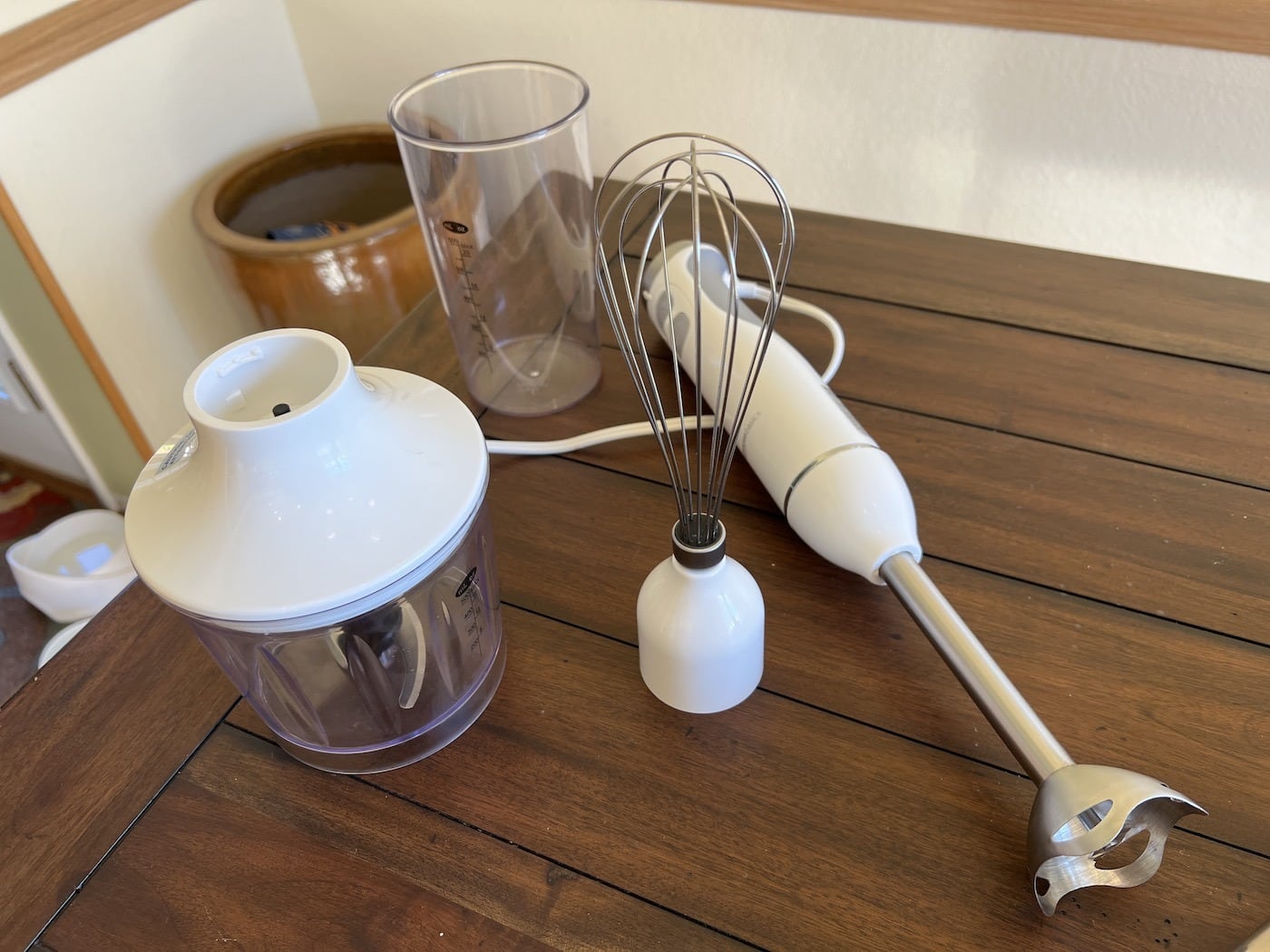
Amazon Basics kit.
Using the Whisk
The whisk attachment for hand blenders is used to add air into the food or drink, giving them more volume. This allows for a fluffy, light texture in whipped cream and eggs. Electric hand blenders are great for this task, saving you a lot of manual effort.
Both the Amazon Basics and KitchenAid models come with an attachable whisk. And both performed very well in my whipping tests.
Mini Chopper
Small volume choppers are great for breaking down foods too rigid to be blended, like onions, cheese or chocolate pieces. It’s an excellent attachment for hand blenders, and you won’t have to splurge on a separate small chopper.
Both the Amazon Basics and the KitchenAid models come with a chopper that attaches to the hand blender stick.
In my testing, again both matched each other in how well they handled these tasks. Where they’re different is in their blade and lid construction, and the only slight negative.. very slight.. was that it was a bit more awkward to get the lid on the Amazon chopper, simply due to its lid shape.
Speed & Power
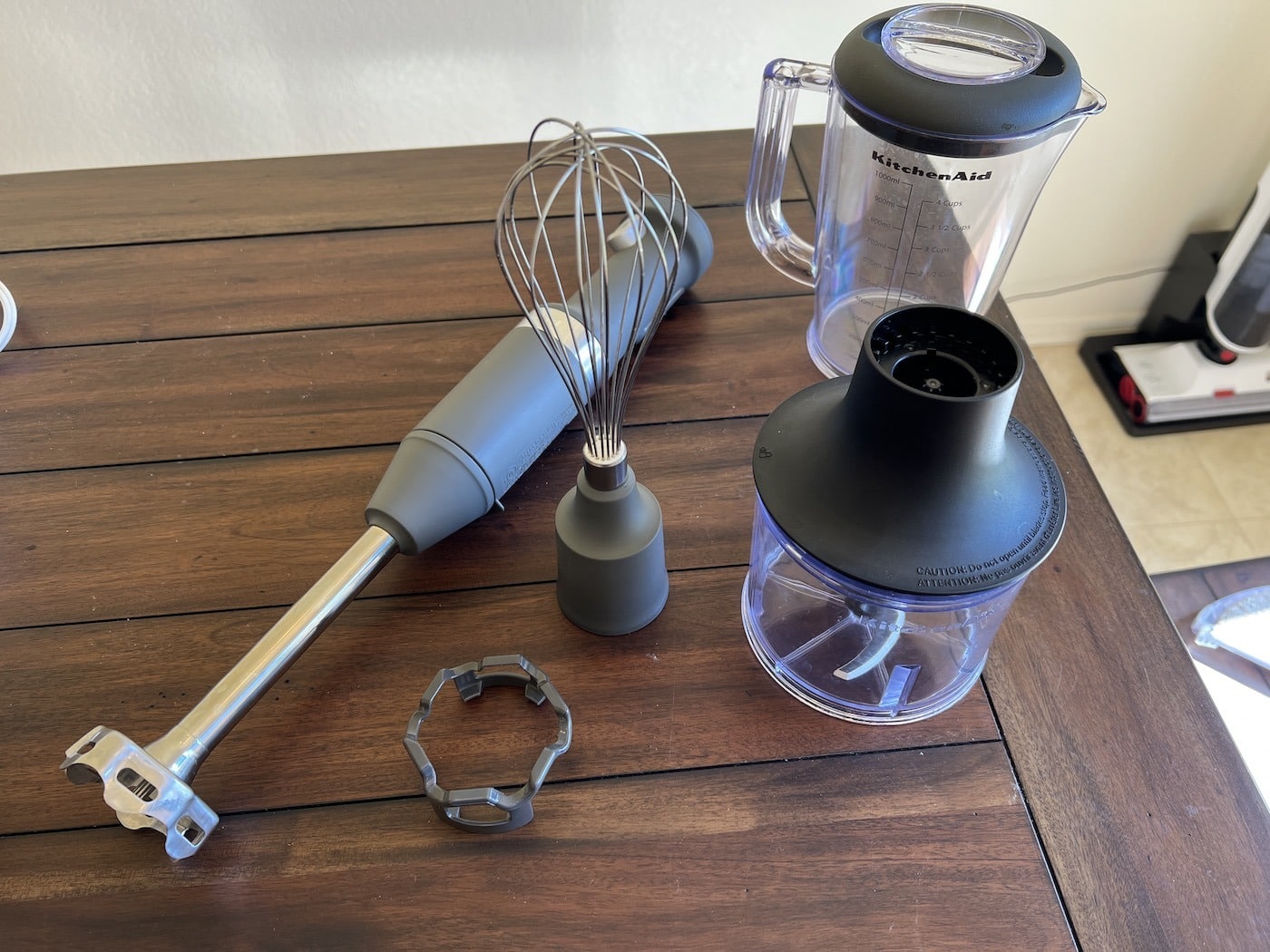
KitchenAid Kit.
Let’s look at speeds. Traditional hand blenders came with either a single-speed or maybe a second speed if you were lucky. These days we have the luxury of multiple speeds in smaller units.
Both the Amazon Basic and KitchenAid models are capable of variable speeds. The Amazon Basics model has a dial to control the speed and a turbo button to engage higher speeds but because of how its positioned, you can’s adjust the speed while your using it, you need to set it then use it, then stop to adjust.
The KitchenAid model controls the speed by the amount of pressure you press the trigger, allowing for a lot of control. The trigger though it a bit hard to finesse and doesn’t really handle finer adjustments well so you need to be careful.
So while both are adjustable, neither has it perfect.
Clean up
The step that no cooking show ever bothers to cover: Cleaning. The ease of cleaning will have an impact on whether you use the hand blender over time.
With both the Amazon Basics and the KitchenAid hand blenders the blender sticks and whisks, plus the choppers are dishwasher safe.
I will note the more cupped design of the Amazon Basics model does take a little more work to clean as stuff tends to get up in there, but with a some determination, or the dishwasher, it’s not a huge issue.
One last note on these two immersion blender ends; the Amazon basics model’s blade end is thin and sharp and could be more likely to scratch your pots, pans or bowls. The KitchenAid comes with a clip-on pan guard you can add for protection.
Price
When comparing price, it’s important to consider how often you’ll use the hand blender and whether having a name brand is important to you.
I’ll say the KitchenAid model is substantially more expensive. The KitchenAid Cordless Hand Blender has an MSRP of $149US, while the Amazon Basics model costs about $35US.
Which one to choose?: Amazon Basics corded vs. KitchenAid cordless hand blender
I think these two hand blenders are quite equally matched and I can recommend both of these mixers to you. There is the corded versus cordless choice to make but you’re getting all the same parts, the same operation and the same power. One of them just costs a LOT more.
**A note about Affiliate Links: TechGadgetsCanada is supported by our readers. Occasionally I will include affiliate links in my reviews. I do this partly for convenience of the reader (since I’ll almost always include a link to the company website or similar anyway) in case you want to read more or purchase, but I also may get a small commission from the click, which helps me keep the blog running. If you choose to use this link I thank you greatly for supporting the blog. There’s no obligation or cost to you for using these links.
